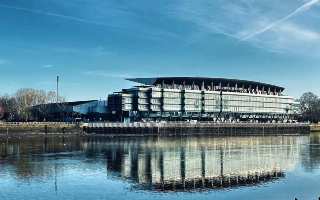Craven Cottage
| Capacity | 28 000 |
|---|---|
| Country | England |
| City | London |
| Clubs | Fulham FC |
| Inauguration | 10/10/1896 (Fulham – Minerva 4–0) |
| Construction 1894–1896 | |
| Renovations | 1903, 1905, 1961–1962, 1965, 1971–1972, 2004, 2019–2025 |
| Record attendance | 49 335 (Fulham – Millwall 2–1, 08/10/1938) |
| Design | Archibald Leitch (1905), Populous (2025) |
| Address | Stevenage Road, London, SW6 6HH |
Advertisement
Craven Cottage – stadium description
What is Craven Cottage like in a nutshell?
Located in Fulham, West London, Craven Cottage is one of the most traditional and atmospheric football stadiums in England. Its special charm comes especially from its elegant eastern stand (Johnny Haynes Stand) and the corner building standing right next to it (Cottage Pavilion).
The historic structures were built in 1905 and are considered one of the most successful works of the famous Scottish architect Archibald Leitch. Attention is drawn to the gabled roof of the old stand, supported by buttresses and enhanced by the distinctive central gable element.
Contrasting with the historic buildings is the new western stand (Riverside Stand), which was built between 2019 and 2025 and is equipped with extensive VIP facilities, full of splendor and luxurious interiors, inspired by Parisian style or the Orient Express vibe.
The Riverside Stand, as the stadium's tallest stand, definitely stands out from the rest. Its facade is also different – glazed, modern, facing the Thames, it is the complete opposite of the brick facade of the historic Johnny Haynes Stand.
Craven Cottage was built in the late 19th century and has primarily served Fulham FC since its inception. However, its history does not lack events of a wider scope: matches at the 1948 Olympics, friendly games and even... the Saudi Arabian Super Cup! The first Premier League match refereed by a woman was played at Craven Cottage as well.
The origin of the name is also interesting – it comes from a former mansion (cottage), built by the 6th Baron Craven, which burned to the ground in 1888. Soon after, a stadium was built on the same site, which took over the name after the mansion.
Over the years, the facility has undergone several significant upgrades. Currently, it can hold about 28,000 spectators, and tickets for The Cottagers' games are among the most expensive in England.
Where did the name Craven Cottage come from?
The term Craven Cottage originally referred to a mansion that was located near the current east stand of Fulham FC's stadium. The residence was built around 1780 by William Craven, 6th Baron Craven, for his wife Elizabeth – with whom, however, he soon found himself separated.
The residence was built on the banks of the Thames River, not far from Fulham Palace. It was surrounded by woods, which once made up part of Anne Boleyn's hunting grounds. In later years, the estate passed into the hands of a number of wealthy aristocrats. It hosted elite social gatherings, and the rooms were decorated in a variety of lavish styles, including Gothic and Egyptian.
In the 1860s, the estate was taken over by an American businessman, who planned to turn it into a place for entertainment and leisure. The venture failed, however, and from 1872 the property remained abandoned, gradually becoming overgrown with vegetation. The final end came with a fire on May 8, 1888, which completely destroyed it.
How did the Craven Cottage stadium come to be?
The abandoned property a few years later attracted the interest of Fulham FC, which purchased it in May 1894. It took two years to clean up the site before the first official match was played here on October 10, 1896, with Fulham FC defeating Minerva 4–0 in the first round of the Middlesex Senior Cup.
What were the key moments in the development of Craven Cottage?
When it opened in 1896, Craven Cottage was just a modest pitch, around which earthen embankments were soon added. In the following years, the facility gradually evolved, with the following works among the most important upgrades:
- 1903: the first wooden stand was built, located on the east side – the so-called “Rabbit Hutch”
- 1905: a major reconstruction designed by the famous Scottish architect Archibald Leitch. A completely new stand was built to the east, extending the entire length of the pitch and crowned by a distinctive roof. The terraced stands on the other sides were also expanded, and a building with changing rooms (Cottage Pavilion) was erected in the southeast corner
- 1961–1962: the terraced stands were enlarged, lighting masts and an electronic scoreboard were installed
- 1965: roofing of the stand behind the north goal
- 1971–1972: a new covered stand (Riverside Stand) was built on the west side
- 2004: reconstruction of the stands behind the goals with the creation of three corner annexes with boxes and the roof over the south stand, elimination of standing areas (installation of missing seats) and replacement of floodlight masts
- 2019–2025: construction of a brand new, luxurious Riverside Stand on the west side.
What does the development of Craven Cottage look like in detail?
How was Craven Cottage shaped in its early years?
In the early years, terraced stands were created around the pitch, and the ramparts were largely strewn with earth excavated during the construction of the London Underground.
The first wooden stand was built in 1903. It was a rather modest, though interesting structure – it consisted of four narrow segments, each covered by a gabled roof. The stand was located on the east side of the pitch, could accommodate 1,200 spectators and earned the nickname “Rabbit Hutch”.
What changes at Craven Cottage did Archibald Leitch bring in?
The safety of the new stand, however, was soon questioned by local authorities and taken to court. The club decided to demolish it; at the same time, it also hired Scottish architect Archibald Leitch to draw up plans for a comprehensive redevelopment of the stadium. The last match involving the “rabbit cage” took place on April 29, 1905.
The centerpiece of the stadium reconstruction carried out to Archibald Leitch's design was a new, distinctive stand stretching along the east side of the pitch. The stand could accommodate 5,000 spectators and was named the Stevenage Road Stand (after the street running behind it).
As part of the renovation of the facility, the Cottage Pavilion, a building with locker rooms, club premises and a balcony overlooking the football field, was also built in the southeast corner. The terraced stands on the other sides of the field underwent modernization as well.
The work, which cost £15,000, began in May 1905, and the rebuilt stadium was inaugurated as early as September 2, 1905 on the occasion of a match against Portsmouth (although the opening of the new Stevenage Road Stand had to wait until November 1905).
When was the attendance record set at Craven Cottage?
Before World War II, the club regularly saw attendances of 30-40,000 spectators. During this period, the stadium's attendance record, unbeaten to this day, was set: on October 8, 1938, a match against Millwall (2–1) was watched by 49,335 spectators. In 1933 there was even a plan to build a huge new stadium for 80,000 spectators to replace Craven Cottage, but it was not realized due to the Great Depression.
Did Craven Cottage suffer any damage during World War II?
During World War II, in September 1940 (at the beginning of the German air raid campaign on Britain – the Blitz), one of the bombs fell just outside the northwest corner of Craven Cottage. The stadium itself was not damaged, but a section of the river wall on the Thames was completely destroyed.
What works were carried out at Craven Cottage in the 1960s?
Between 1949 and 1952, Fulham FC made its first appearance in the First Division (the current Premier League). A few years after its second promotion to the top-flight (1959), the stadium saw its first major modernization work since 1905: in 1961 the terraced stands were enlarged, and a year later the venue was upgraded with artificial lighting and an electronic scoreboard.
The cost of installing the lighting, about £25,000, was covered by the Supporters Club. Fulham was the last First Division team to install floodlights at its facility. The first match with the lights on was on September 19, 1962, when Fulham beat Sheffield Wednesday 4–1.
In 1965, the stand behind the north goal (Hammersmith End) was roofed over, which was made possible by money raised from the sale of Alan Mullery to Tottenham the year before.
When was the first Riverside Stand built?
In 1967, the club decided to rebuild the western terraces (on the Thames side), but demolition of the old, terraced structure did not begin until the summer of 1971. The new stand, a more modern one – steep, with seating and roofed – was inaugurated on February 29, 1972 with a friendly match against Benfica (3–2), which included the famous Eusébio.
The new structure was named the Riverside Stand. In 1977, after the death of Fulham FC manager Eric Miller, the stand was named after him (Eric Miller Stand). In the 1990s, however, the name was reverted to the Riverside Stand.
What upgrades were made at Craven Cottage in the early 21st century?
When Fulham FC was promoted to the top-flight for the third time in 2001, Craven Cottage did not meet the league's requirements, which were raised significantly in the wake of the Taylor Report.
In its first season in the Premiership, the club still played in its own stadium, but since no work was undertaken, the team had to move to another venue in the summer of 2002 – the choice was Queens Park Rangers' nearby Loftus Road.
The modernization of Craven Cottage was not carried out until the first half of 2004. As part of the work, the stands behind the goals were rebuilt – the south stand (Putney End) received a canopy, and three corner annexes with boxes were built on both. In addition, plastic seats were installed in the east stand and floodlight masts were replaced.
The redevelopment was completed before the start of the 2004/05 season, in which Fulham FC returned to its venue after a two-year hiatus. The upgrades allowed Craven Cottage to accommodate 22,000 spectators – all of which were seated and the vast majority of which were under roof.
The modernization could have been much more spectacular, as the club initially intended to carry out a comprehensive reconstruction of the stadium. The plans even initially received approval from local authorities, but were protested by a group of local residents.
When was the new Riverside Stand built?
The club didn't give up on its ambitious plans for the stadium, especially since it continued to play regularly in the Premier League after being promoted. In 2011, plans were unveiled for the reconstruction of the west stand, prepared by the KSS Group.
After Shahid Khan took over the club, the new owner commissioned a redesign of the stand – the goal of the businessman, whose portfolio also included an NFL team, the Jacksonville Jaguars, was to maximize profits. This led to a new design in 2017, developed by well-known studio Populous.
Redevelopment of the west stand finally began in the summer of 2019, with the old Riverside Stand from the early 1970s demolished and a completely new structure built in its place. The stand was originally scheduled to be ready as early as 2021, but the COVID-19 pandemic, as well as the collapse of the main contractor, Buckingham Group, significantly prolonged its completion.
The lower level of the new stand opened to spectators at the beginning of the 2022/23 season, then the upper floor was gradually opened as well, and the full opening was not announced until May 2025 after the inauguration of the rooftop terrace of the new Riverside Stand.
Who are the hosts of Craven Cottage?
The venue is hosted and owned by Fulham FC. The club was founded in 1879 and is today the oldest professional football club in London. The team first participated in the First Division (the current Premier League) from 1949 to 1952, and then also from 1959 to 1968. In 1975 Fulham FC reached the FA Cup final.
From 1994 to 1997, the club played at its lowest-ever fourth tier. In the summer of 1997, Egyptian businessman Mohamed Al-Fayed became the new owner. As early as 2001, the team returned to the top division, and in 2002 won the Intertoto Cup.
The team finished the 2008/09 season in its highest ever 7th place in the Premier League table. The following season Fulham FC achieved the greatest success in its history, reaching the final of the UEFA Europa League, where it lost 1–2 (after extra time) to Atlético Madrid.
In the summer of 2013, American-Pakistani entrepreneur Shahid Khan became the club's new owner. In 2014, the team was relegated from the Premier League, only to return to it after four years. The team was also relegated to the Championship in 2019 and 2021, but returned after one season each time.
Where did Fulham FC previously play?
The club purchased a plot of land for the Craven Cottage stadium as early as 1894 – the facility itself was inaugurated two years later, and has served Fulham FC almost continuously since then (with the exception of 2002–2004, when the stadium did not meet Premier League requirements and the team temporarily played at Loftus Road).
However, before Craven Cottage became Fulham FC's long-term home, the club played at a number of other grounds located in West London. The following were:
- 1879–1883: The Mud Pond
- 1883: Eel Brook Common
- 1883–1886: Lillie Road Ground
- 1886–1888: Ranelagh House Ground
- 1888–1889: Barn Elms Playing Fields
- 1889–1891: Purser's Cross
- 1891: Eel Brook Common
- 1891–1895: Half Moon Ground
- 1895–1896: Captain James Field
What events take place at Craven Cottage?
Craven Cottage is primarily the home of Fulham FC, which regularly plays its matches there. In addition to hosting major sporting or cultural events, the stadium makes its facilities available for rent – for business receptions and special events such as weddings and birthdays.
What national team matches have been held at Craven Cottage?
England national team
Not long after the stadium was rebuilt to Archibald Leitch's design (1905), the venue had the opportunity to host a match of the English national team, which tied here with Wales 1–1 on March 18, 1907. The game was played as part of the annual British Home Championship tournament, and the result, as it later turned out, helped the Welsh win the competition for the first time in history. It was the only match so far of the senior England national team at Craven Cottage.
Olympic Games 1948
During the 1948 Olympic Games, which were held in London, two matches of the Olympic football tournament were played at Craven Cottage. On July 31, Yugoslavia and Luxembourg played here in the first round (6–1), and on August 5 there was a quarterfinal between Great Britain and France (1–0).
Northern Ireland national team
On February 14, 1973, the stadium hosted a 1974 World Cup qualifying match between Northern Ireland and Cyprus. The game was one of many at the time that the Northern Ireland national team had to play outside the country due to the ongoing conflict (The Troubles). The match ended with a score of 3–0 and was Northern Ireland's only victory in these qualifiers.
Friendly matches
At the beginning of the 21st century, Craven Cottage quite often served as a neutral arena for friendly matches of various national teams. The facility was particularly favored by the Australian national team, which played four matches there between 2004 and 2007, and another three between 2013 and 2018. The national teams of Ireland or Nigeria also played several matches at this venue.
What other events take place at Craven Cottage?
The 2010/11 Women's Champions League final
On May 26, 2011, the stadium hosted the final of the Women's Champions League (this was then the second edition of this competition after the reform and name change). The game featured Olympique Lyonnais and 1. FFC Turbine Potsdam, the same teams that played against each other in the previous edition's final.
The match was won by the Olympique Lyonnais (2–0), which took revenge for the defeat after a penalty shootout a year ago. For Olympique Lyonnais, it was the first triumph in the Women's Champions League and one of many that the team achieved in the following years, building its position as the most successful team in Europe.
2016 Saudi Super Cup
On August 8, 2016, the stadium hosted the Saudi Super Cup match between Al-Ahli of Jeddah (as winners of the 2015/16 Saudi Pro League and the 2016 King's Cup) and Al-Hilal of Riyadh (winners of the 2015/16 Saudi Arabia Crown Prince's Cup).
The match was the fourth edition of the Saudi Super Cup and the second played outside the country (the previous one was also held in London, at nearby Loftus Road). The match ended in a 1–1 draw, and the Al-Ahli team was better in the penalty shootout series (4–3), winning the trophy for the first time.
First Premier League match refereed by a woman
One interesting fact is that the first ever Premier League match refereed by a woman took place at Craven Cottage. It was a match between Fulham FC and Burnley FC (0–2), played on December 23, 2023, and the main referee was Rebecca Welch.
The fastest hat-trick in Premier League history
On December 26, 1963 (Boxing Day), Fulham defeated Ipswich Town at home 10–1. Four goals in that match were scored by Graham Leggat, including three of them scored just three minutes apart – which was considered the fastest hat-trick ever in England's top-flight. The achievement was only beaten on May 16, 2015 by Sadio Mané, scoring a hat-trick in two minutes and 56 seconds in a match between Southampton and Aston Villa.
Rugby league matches
On October 18, 1911, the stadium hosted a rugby league match between the England and Australasia national teams, ending in an 11–6 win for the visitors. The match was one of a series of games played in Britain by the Australasia team (made up of players from Australia and New Zealand) as part of the so-called Kangaroo Tour.
Craven Cottage was also the first home of the London Broncos rugby league team, founded in 1980 as Fulham RLFC. The team played its matches at the venue from 1980 to 1984.
The Boat Race
The stretch of the Thames at which Craven Cottage is located is the venue for the prestigious rowing race, The Boat Race (the course, known as The Championship Course, runs from Putney to Mortlake – the stadium itself is located near the start).
The race is held every year, in the spring, and has a tradition dating back to 1829. It features competition between rowing teams representing the universities of Cambridge and Oxford. Although the event is not held directly in the stadium, the competition can be viewed both from the promenade running in front of the venue and from inside the glass-enclosed Riverside Stand.
What are the characteristics of Craven Cottage?
Craven Cottage is a football-specific facility with distinctive English architecture, featuring four stands on each side of the pitch. Of note are the stylish east stand (Johnny Haynes Stand), and the corner building, Cottage Pavilion – both designed by the famous Scottish architect, Archibald Leitch, and built in 1905.
Contrasting with the historic Johnny Haynes Stand is the new Riverside Stand, located on the opposite, west side – on the banks of the Thames. With an expansive upper floor, it is by far the tallest stand in the stadium and has been furnished with luxury boxes and upscale restaurants.
The stadium can accommodate about 28,000 spectators – all seated, with the vast majority of the auditorium being under the roof. The Johnny Haynes Stand, the corner building (Cottage Pavilion) and the old turnstiles on the Stevenage Road side were declared a Grade II listed building in 1987.
How do the various stands at Craven Cottage look like?
Johnny Haynes Stand
The Johnny Haynes Stand is the most distinctive, historic stand at Fulham FC's stadium. It was built in 1905 to a design by the famous Scottish architect Archibald Leitch, author of many stadiums in the British Isles.
The stand is located on the east side, along Stevenage Road – hence it was originally called the Stevenage Road Stand. After Johnny Haynes, considered Fulham's greatest ever player, died in 2005, the stand was decided to be named after him.
The Johnny Haynes Stand is covered by a gabled roof, supported by pillars at the front and varied by a prominent gable in the central section. The upper part of the auditorium retains the old wooden seats.
On the outside, the stand has a facade of red brick, decorated with stone elements. Inside the stand is the club store, which can be accessed from Stevenage Road.
Riverside Stand
The Riverside Stand, the stadium's western stand, was built between 2019 and 2025, replacing an older structure from the early 1970s. It is the tallest and most modern stand, divided into two levels, with the lower level being relatively low.
The stand's design was inspired by the architecture of boathouses on the Thames, characteristic of nearby Putney, a neighborhood with a rich rowing tradition.
Located on the banks of the Thames River, the new Riverside Stand features a modern glass facade that makes it a distinctive accent to the waterfront landscape. Just in front of the stand is a new promenade that runs along the river – previously, passage was impossible at this location, and walkers had to bypass the stadium all the way around, wanting to continue along the Thames.
The stand has extensive hospitality, with luxury lodges and restaurants. A highlight of some of the clubs are views of the Thames, and the extravagant interior design draws on a variety of themes – from the Parisian style, to the atmosphere of the Orient Express, to the ballroom of the Titanic.
The stand is also distinguished by a striking, expansive roof, covered with photovoltaic panels and finished with a glass section. Under the roof, floodlights have been inserted to replace the two corner flagpoles – another two still stand, however, on the opposite side.
The Riverside Stand is characterized by luxury and glamour – it was designed to maximize profits.
Hammersmith End and Putney End
The stands behind the goals take their names from their neighboring boroughs – the northern one is Hammersmith End and the southern one is Putney End. Both stands have canopies assisted by internal supports that can obstruct fans' view of the pitch.
Hammersmith End is home to the loudest supporters of the home team. On its sides are two corner annexes with boxes. Part of the Putney End stand, on the other hand, is dedicated to guest supporters.
What is the Cottage Pavilion?
In the southeast corner stands a distinctive building that houses the players' locker rooms. Part of it is also a balcony overlooking the field, with three rows of seating designed for families and friends of the players.
The structure was built as part of a reconstruction carried out in 1905, designed by Archibald Leitch, and is a listed building. It is also sometimes mistakenly associated as the former residence of Baron Craven, which gave the stadium its name (this one burned down in 1888 and has not survived to the present day).
What statues stand in the vicinity of Craven Cottage?
Next to Craven Cottage are two bronze statues commemorating notable Fulham FC players Johnny Haynes and George Cohen. In the past, a statue of Michael Jackson also stood next to the stadium.
Statue of Johnny Haynes
The Johnny Haynes statue was unveiled on October 18, 2008, the third anniversary of his death, and stands just in front of the east stand (also named after him), near the south corner.
Johnny Haynes spent most of his career with Fulham FC, where he played from 1952 to 1970 and is considered the best player in the club's history. Haynes played as an inside forward and scored 56 appearances for the England national team (including matches at two World Cups, as well as in the role of a captain).
Statue of George Cohen
The statue of George Cohen was unveiled on October 1, 2016, while the player was still living (he died at the end of 2022) – as part of the celebration of the 50th anniversary of the England national team winning the World Cup title. The statue is located behind the northwest corner of the stadium.
George Cohen was a right-back who was associated with Fulham FC throughout his career (1956–1969). He played for the England national team during the victorious 1966 World Cup.
Michael Jackson statue
On April 3, 2011, a statue of Michael Jackson, who had died two years earlier, was unveiled behind the northwest corner of the stadium (where a statue of George Cohen later stood).
The statue was created at the initiative of Fulham FC's then-owner Mohamed Al-Fayed, who was a friend of the famous singer. Jackson himself once, in 1999, attended a Fulham FC match (against Wigan Athletic).
The sculpture, made of plaster and resin, received a mixed reception, and in September 2013, a few months after the club was taken over by its new owner, Shahid Khan, it was removed.
The statue was moved to the National Football Museum in Manchester, where it was on display from 2014 to 2019. After being removed from the exhibition, it was deposited in an archival storage facility at Deepdale Stadium in Preston.
Where is Craven Cottage located?
The stadium is located on the banks of the River Thames, in the Fulham area of West London – about 5 mi (8 km) west of Trafalgar Square. The nearest tube station, Putney Bridge, is about 1 mile away – the road from the station to the stadium runs along the Thames, through green spaces, past Fulham Palace and Bishops Park, hence referred to by fans as “The Green Mile”.
Is it possible to visit Craven Cottage?
Fulham offers “Craven Cottage Tours”, which is a guided tour of the stadium. During the tour you can learn about the history of the stadium and related trivia, walk through the stands, visit the corner building (Cottage Pavilion), the players' locker rooms or the VIP areas.
How Craven Cottage compares to other Premier League stadiums?
Advertisement
Pictures
-
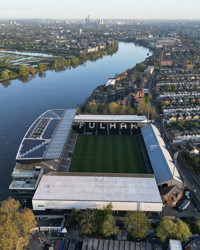
17.04.2025 © Paweł Mogielnicki 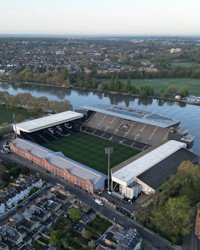
17.04.2025 © Paweł Mogielnicki 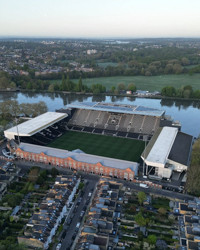
17.04.2025 © Paweł Mogielnicki 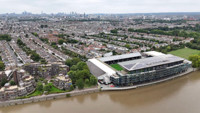
01.08.2025 © NEIL TIMOTHY 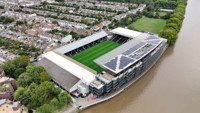
01.08.2025 © NEIL TIMOTHY 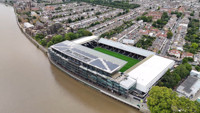
01.08.2025 © NEIL TIMOTHY 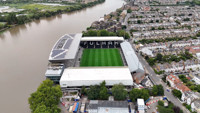
01.08.2025 © NEIL TIMOTHY 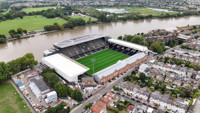
01.08.2025 © NEIL TIMOTHY 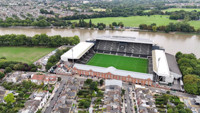
01.08.2025 © NEIL TIMOTHY 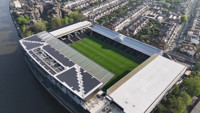
05.2024 © 92bydrone 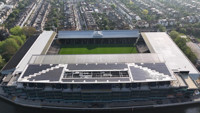
05.2024 © 92bydrone 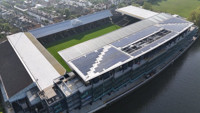
05.2024 © 92bydrone 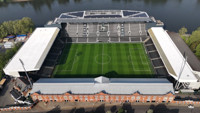
05.2024 © 92bydrone 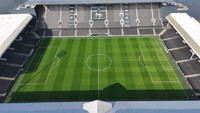
05.2024 © 92bydrone 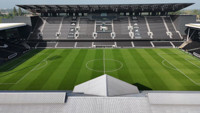
05.2024 © 92bydrone 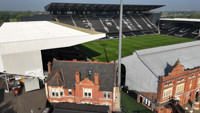
05.2024 © 92bydrone 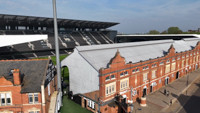
05.2024 © 92bydrone 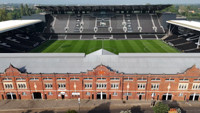
05.2024 © 92bydrone 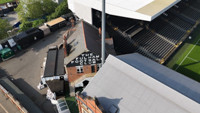
05.2024 © 92bydrone 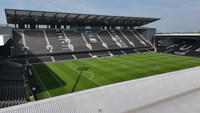
05.2024 © 92bydrone 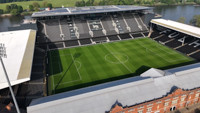
05.2024 © 92bydrone 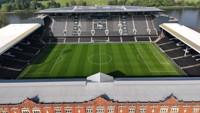
05.2024 © 92bydrone 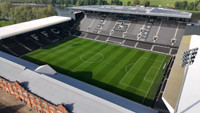
05.2024 © 92bydrone 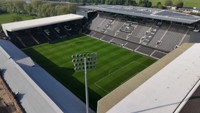
05.2024 © 92bydrone 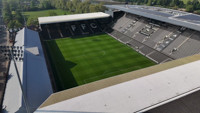
05.2024 © 92bydrone 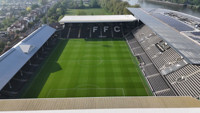
05.2024 © 92bydrone 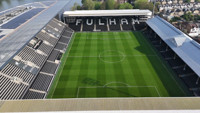
05.2024 © 92bydrone 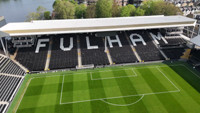
05.2024 © 92bydrone 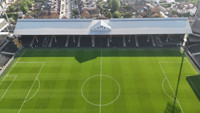
05.2024 © 92bydrone 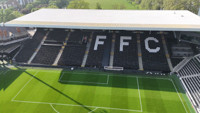
05.2024 © 92bydrone 
06.12.2023 © Mark 
02.05.2022 © Diego Crespo 
06.12.2023 © Mark 
06.12.2023 © Mark 
06.12.2023 © Mark 
06.12.2023 © Mark 
17.12.2022 © Nick C (CC BY-SA 4.0) 
14.07.2009 © dullhunk (cc: by) 
28.04.2011 © Thomas Pringle, Crown Copyright 
25.04.2010 © Mike Fleming (cc: by-sa) 
02.02.2011 © Steffen Hüther 
26.11.2010 © Nick Sarebi (cc: by) 
25.11.2007 © Travis forden (cc: by-nc-sa) 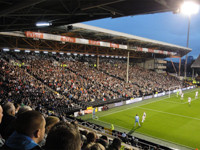
18.08.2011 © brucki.blogspot.com 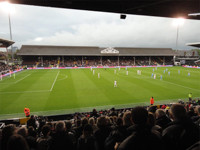
18.08.2011 © brucki.blogspot.com 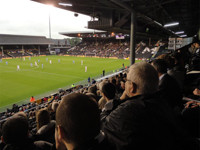
18.08.2011 © brucki.blogspot.com 
02.02.2011 © Steffen Hüther 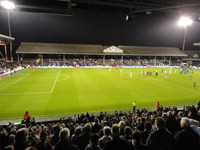
18.08.2011 © brucki.blogspot.com 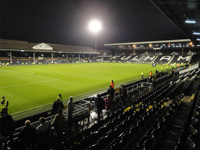
18.08.2011 © brucki.blogspot.com 
17.04.2010 © Tom Green (cc: by-nc-sa)
2004–2019:
Related news
2025
2024
-
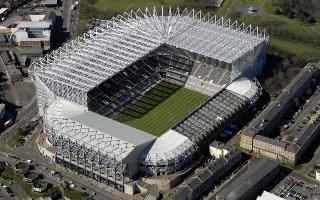
England: Will government introduce new rules on stadium sales?
The government is preparing to grant powers to an independent regulator that will prevent Premier League clubs from selling their stadiums to affiliated companies or third parties.
-

England: Attendance at Premier League stadiums in the 2023/24 season
Another season, another league title for Manchester City. The award for highest attendance also went to the city of Manchester as well, but to the Red Devils, despite the team's worst season in Premier League history. As many as six clubs surpassed one million spectators this season, with five stadiums filling up at an average of more than 99%. Amazing.
-

England: A pool will appear on the top of the stadium!
Fulham FC has presented visualizations of the Riverside Stand designed by Populous at Craven Cottage Stadium in London, featuring a rooftop pool. This visualization is part of the stadium's redevelopment. What are the details of this project?
-

England: Well-known portal has chosen 100 best stadiums. There are surprises
FourFourTwo, a sports-dedicated portal, has selected the 100 best stadiums in Great Britain. As the author of the list ironically stated, "We’re convinced there’ll be absolutely no arguing about it…”. So, let's take a look at which stadiums made it into the ranking.
2023
2022
-

England: Stadium rises will affect Premier League clubs
The value of almost all 20 stadiums owned by teams playing in the Premier League has recently increased. As a result, clubs will face multi-million pound tax increases involving their infrastructure.
-

England: Meet the 2022/23 Premier League stadiums!
Much to the delight of fans, the new English Premier League season will kick off on Friday, August 5. On this occasion, we would like to introduce you to the stadiums where the footballers of the world's best league will soon be playing. Get your English tea in hand and let's get started!
2021
2020
-

COVID-19 crisis: English supporters to return in October?
The government is preparing to reopen sports stadiums across the UK. While first trial events will take place in just 2 weeks, all stadiums could be open again only from October onwards.
-

England: 341 games in five “regional hubs”?
In case not all stadiums are available to host games of Championship, League One and League Two, the EFL is considering using stadium clusters to hold the 341 remaining league games of 2019/20.
-

England: Safe standing in Premier League and Championship from 2021?
Though physically safe standing is already in Premier League, legally it's still prohibited. But that might change as the government is expected to act quickly, possibly introducing legal standing in 2021.
2019
2018
-

London: Fulham announce capacity cut for 2 seasons
Some football clubs expand their stadiums without cutting capacity throughout the process. It's not possible at Craven Cottage, though, which means a reduction to some 20,000 will take place until late 2021.
-

Safe standing: Government to rethink all-seating
By all means the debate was predictable, but that's fine, we'll take it. The most important thing is: British authorities will review the all-seater rule, which officially opens the case for legal standing in top leagues of England and Wales.
-

England: Supporters force parliament to debate safe standing!
It took only several days of momentum to reach immense support of 100,000 British citizens and thus force the British government to officially debate safe standing in Premier League and Championship.
-

London: Fulham with planning permission
Fulham FC have announced their new Riverside Stand development plan received the green light from London Borough of Hammersmith and Fulham earlier this week.
2017
-

New design: Fulham's second riverside project
It's exciting, worth knowing more about. But it's also not a perfect design by any means. Here's what we took away from what Fulham FC submitted in their latest planning application.
-

London: Fulham to show Craven Cottage expansion design soon
Pre-application documents filed, now it's time for public exhibition and consultation of what will be the new Riverside Stand at Craven Cottage. Planning application should follow by year end.
-

London: Fulham's stadium deadlock explained
Just 2 weeks before planned groundbreaking the project had been put on hold and is still yet to start. Now the general contractor sheds new light on reasons behind the decision.

 StadiumDB
StadiumDB